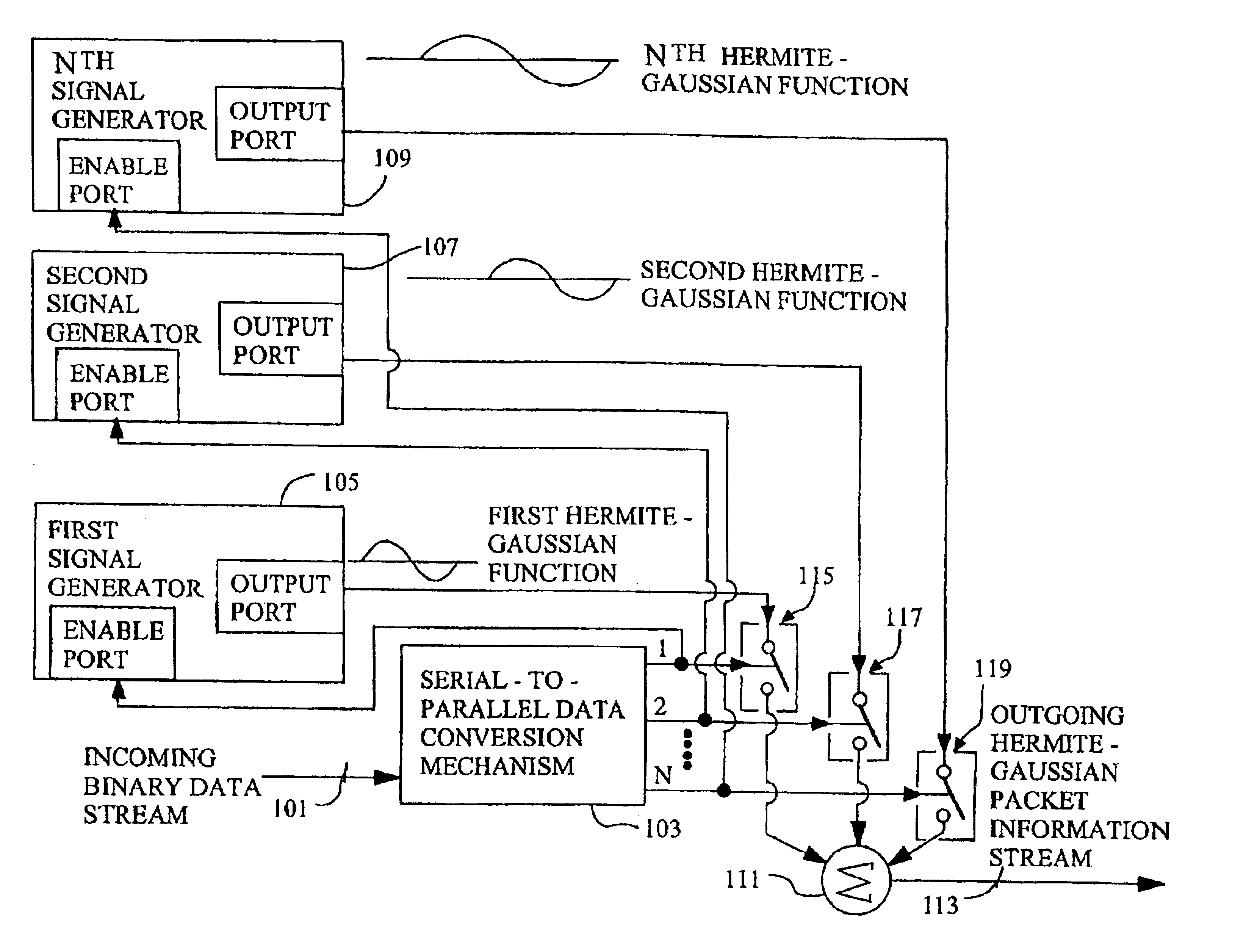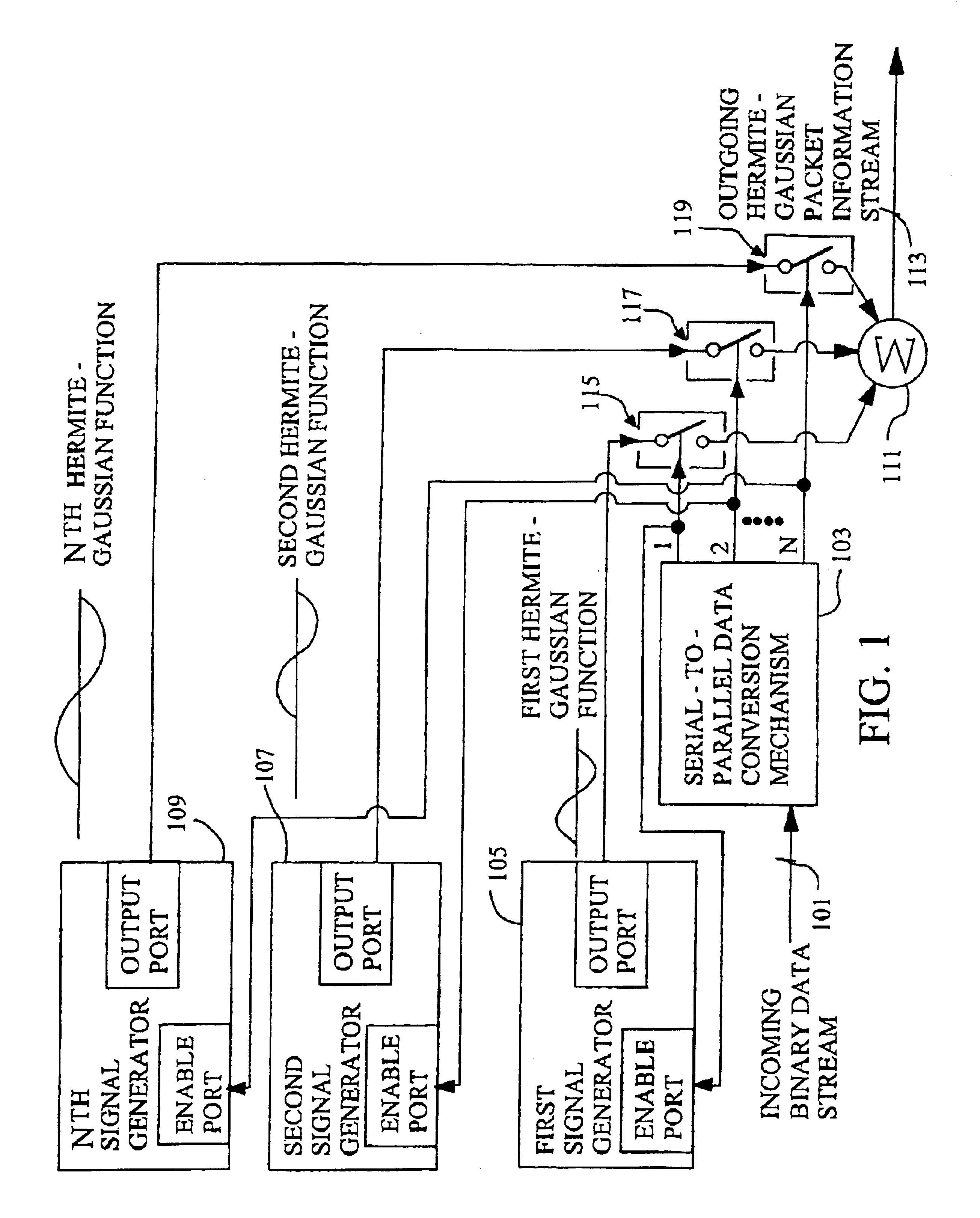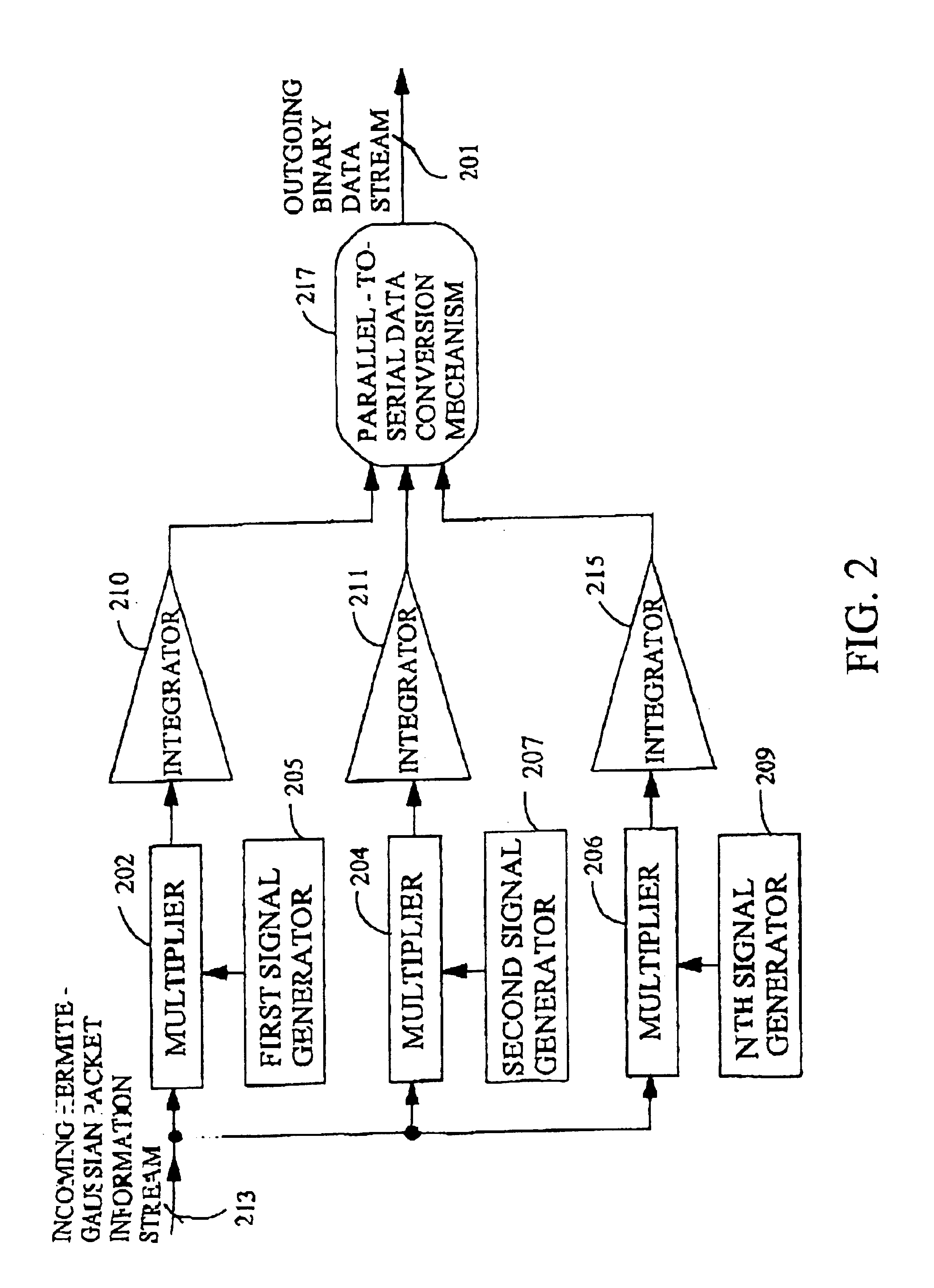Techniques for communicating information using Hermite-Gaussian basis functions
a technology of hermitage and basis function, applied in the field of communication techniques, can solve the problems of increased usage, unsatisfactory resolution, and complex equipment required to access the internet, and achieve the effect of greater fidelity in transmission and high bit sampling
- Summary
- Abstract
- Description
- Claims
- Application Information
AI Technical Summary
Benefits of technology
Problems solved by technology
Method used
Image
Examples
Embodiment Construction
[0050]The systems and methods of the present invention enhance the effective bandwidth capacity of communications links or storage media by transmitting a plurality of Hermite-Gaussian waveform components each characterized by a unique Hermite-Gaussian function. A combination of Hermite-Gaussian waveform components is used to construct a Hermite-Gaussian packet, and a plurality of Hermite-Gaussian packets is used to generate a Hermite-Gaussian stream.
[0051]Pursuant to a first embodiment of the invention that increases the effective data throughput of a transmission medium, incoming information is received as a bit stream of binary coded information (“0”s and “1”s), and then transformed to an equivalent coding in which “0”=“no-play” and “1”=“play”, to be applied to generation and / or transmission and / or enablement of a Hermite-Gaussian waveform component selected from a set of predetermined Hermite-Gaussian waveform components.
[0052]Fundamentally, a Hermite-Gaussian function is any fu...
PUM
 Login to View More
Login to View More Abstract
Description
Claims
Application Information
 Login to View More
Login to View More - R&D
- Intellectual Property
- Life Sciences
- Materials
- Tech Scout
- Unparalleled Data Quality
- Higher Quality Content
- 60% Fewer Hallucinations
Browse by: Latest US Patents, China's latest patents, Technical Efficacy Thesaurus, Application Domain, Technology Topic, Popular Technical Reports.
© 2025 PatSnap. All rights reserved.Legal|Privacy policy|Modern Slavery Act Transparency Statement|Sitemap|About US| Contact US: help@patsnap.com



